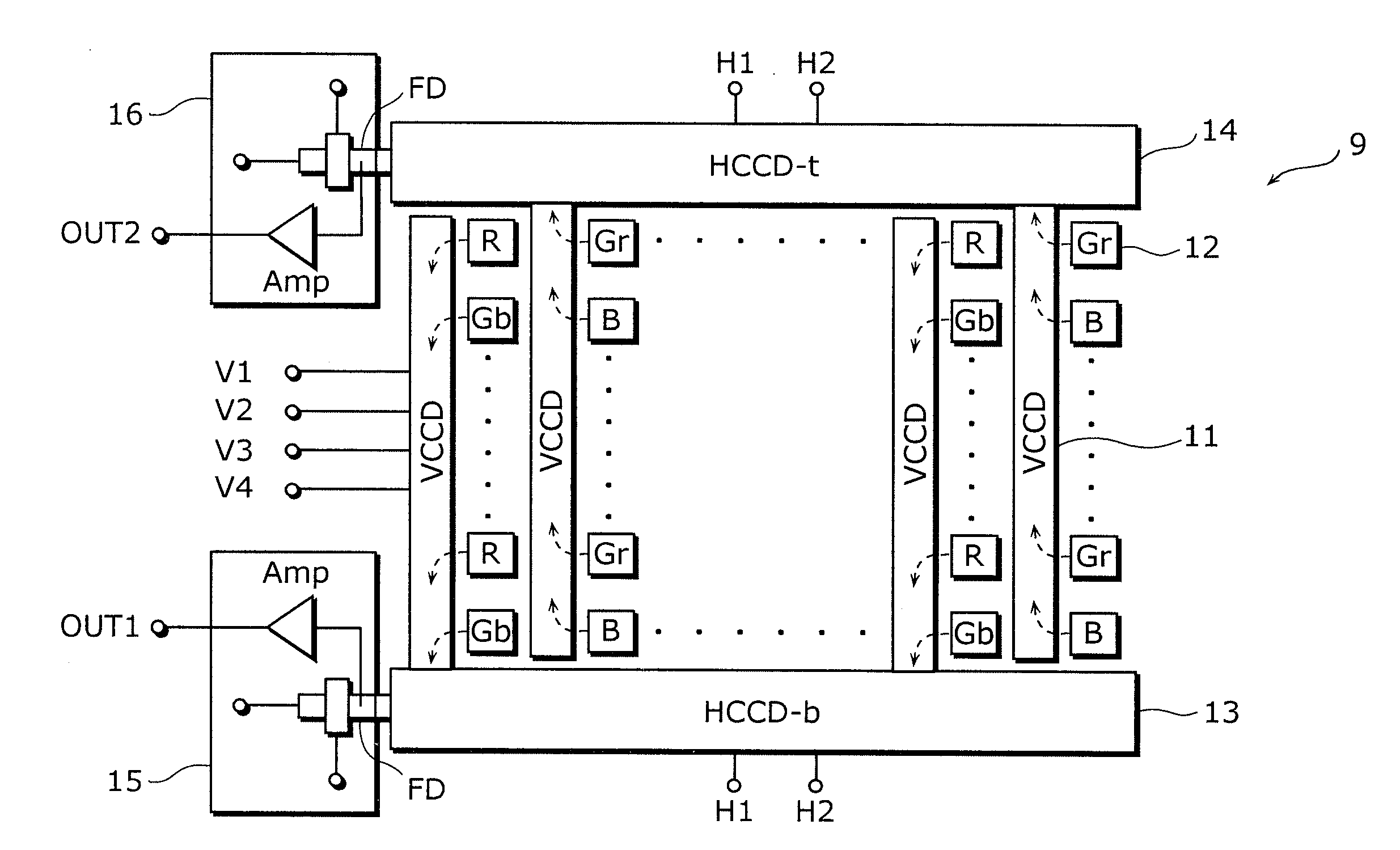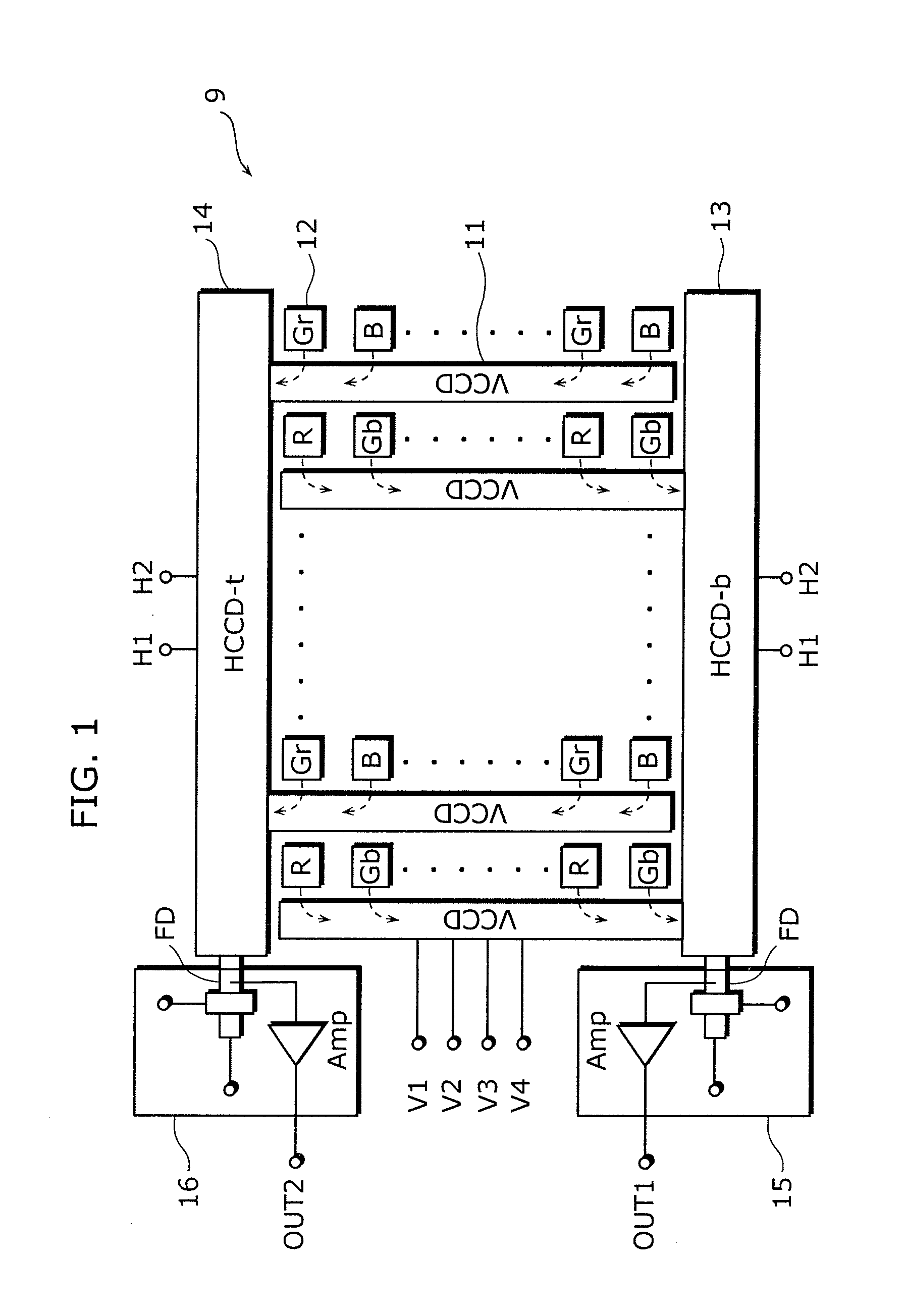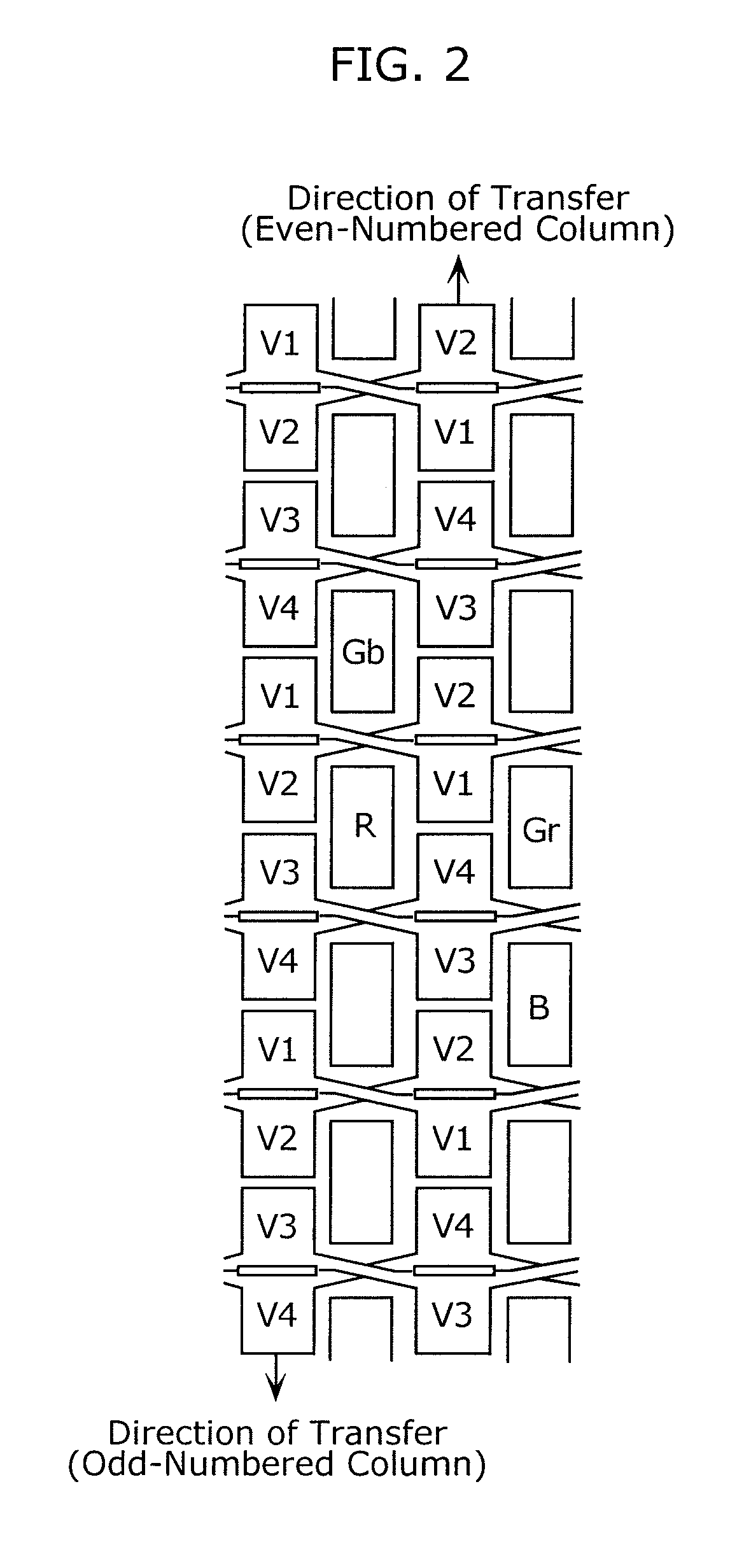Solid-state imaging device
a solid-state imaging and imaging device technology, applied in the direction of radioation control devices, television system scanning details, television systems, etc., can solve the problems of limiting the readout operation to 2, difficult to achieve the dynamic range improvement of output signals, and, more broadly, the image quality of the solid-state imaging device that performs the conventional two-way operation
- Summary
- Abstract
- Description
- Claims
- Application Information
AI Technical Summary
Benefits of technology
Problems solved by technology
Method used
Image
Examples
Embodiment Construction
[0038]Hereinafter, a CCD imaging device according to one embodiment of the present invention will be described in detail with reference to the accompanying drawings.
[0039]
[0040]FIG. 3 is a block diagram illustrating an exemplary functional structure of a CCD imaging device 1 according to one embodiment of the present invention.
[0041]The CCD imaging device 1 includes an imaging area having vertical CCDs 11, which are represented by vertically oriented rectangles labeled “VCCD”, and photodiodes 12, which are represented by squares labeled “R”, “Gr”, “Gb”, or “B”. In the imaging area, odd-numbed (counting from the left) vertical CCDs transfer signal charges from the photodiodes in a downward direction, whereas even-numbered vertical CCDs transfer the signal charges from the photodiodes in an upward direction.
[0042]A horizontal CCD 13 and a horizontal CCD 14 are arranged below and above the imaging area, respectively. Signals outputted from left ends of the horizontal CCDs 13 and 14 are...
PUM
 Login to View More
Login to View More Abstract
Description
Claims
Application Information
 Login to View More
Login to View More - R&D
- Intellectual Property
- Life Sciences
- Materials
- Tech Scout
- Unparalleled Data Quality
- Higher Quality Content
- 60% Fewer Hallucinations
Browse by: Latest US Patents, China's latest patents, Technical Efficacy Thesaurus, Application Domain, Technology Topic, Popular Technical Reports.
© 2025 PatSnap. All rights reserved.Legal|Privacy policy|Modern Slavery Act Transparency Statement|Sitemap|About US| Contact US: help@patsnap.com



